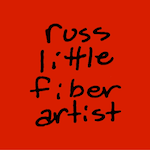Lessons from my 365: A simple graphic palette promotes clarity
I love rediscovering things that I've always known, but sort of lost in my cluttered brain. Simplicity is on of those things I keep rediscovering, and every time I do, it brings me up short. Consider the designs below. Each is limited to a palette to 2-3 colors. The colors are also even or level, meaning that they aren't mottled or blotchy with visible brushstrokes. The result is that in each case there's a fairly clear relationship between figure and ground, and there's a clarity and crispness to the design.
Limiting the palette to a few discrete colors and rendering those colors evenly is key to this success.
What if you were to create a design that featured, let's say, 100 values of red, from pale pink to deep burgundy? Yes, they would be discrete colors, and they would also be from a limited hue range. It's certainly possible to use all 100 of those colors in a single design. It could be lovely. Such a palette could also allow you to create wonderful depth and transparency, but probably not the crispness of a limited palette.
You can see the same principle at work in a B&W photograph, which essentially a design using grey values from white to black. A low contrast image might appear flat or subdued, which the same image rendered at a higher contrast will appear more lively. One is not better than the other. It all depends on the artist's intent.






